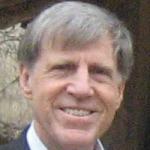In the first part of my review of Michele J. Gelfand's book, Rule Makers, Rule Breakers, I explained the author's argument about the ways social norms impact organizational cultures. In this part, I'll explore more deeply the ways understanding social norms can help leaders build open organizations.
Recall that Gelfand outlines two general types of cultures, one "tight" and one "loose." Tight cultures tend to value more rigid social order and conventional thinking; loose cultures tend to be more flexible and adaptable, but might struggle more with coordination. Gelfand doesn't present these two types as a binary choice—as if an organization could consist entirely of one or the other. These are extremes, the poles of a continuum:
- Totally tight: Completely controlled (something like solitary confinement, with sensors attached to your head that shock you when you think something you're not supposed to, or that provide an emotional high when you think something you should). Are you willing to give up total autonomy in support of a group's social norms?
- Totally loose: Completely free to do anything you wish, no matter how much it adversely impacts the people or environment around you. How much autonomy do you demand? How much (or little) are you willing to sacrifice in service to the group?
Neither is ideal nor realistic, obviously. In reality, people desire order in their life, and to do that they must give up some of their personal control. On the other hand, we all want to be as free as possible.
So this is the open leader's challenge: determine a team's overall position on this continuum, then attempt to move the group to a more balanced position that's best suited to accomplishing the organization's goals (and to encourage free thinking while avoiding total chaos).
Your normative radar
Gelfand writes that all humans have some level of "normative radar" that attunes them to the social norms of the surrounding groups. Some people's radars are more sensitive than others. Some people have a more difficult time understanding what's expected in a wide range of situations). On the other hand, some are extremely sensitive to the social norms around them. Gelfand calls them "high self-monitors,'' as they can very quickly and easily detect what is appropriate in any situation. These people are always saying what the group wants to hear, but tightly hide their inner feelings.
Furthermore, whether individually weak or strong in detecting social norms, people living and working in tight environments tend to be better at picking up what the group considers "proper" behavior than those working in loose cultures. This is a learned trait. The people in tight cultures are often in a high-prevention focus. This is probably why they prefer very structured, clearly defined environments. It is easier for them to know what to do. Ambiguity is painful for them. The people in loose cultures, alternatively, are more often in a high-promotion focus. They are outwardly presenting their position on the issue at hand. Both have their strengths and weaknesses, as you can see. Effective open leaders understand all of these.
An open leader's role
An open leader must strike a balance between tight and loose organizational culture, especially when approaching different problems or contexts. For example, consider how a company in different stages of its maturity responds to external threats. A start-up company has very different threat concerns than established companies with long histories. On the other hand, start-ups have few established procedures and can be freer in their operations. As time passes, depending on the company growth and the competitive environment, the looseness-tightness balance and adapting to the situation may be required to shift.
So open leaders can ask themselves: What is your company's relative level of tightness or looseness? Is its level balanced to be most effective? How could it be pushed in one direct or the other to reduce liabilities and increase assets of both looseness and tightness. Leaders can ask these same questions of their divisions, departments, immediate teams, or even temporary project teams. This is where the open organization principle of adaptability becomes important.
Gelfand explains that corporations with large tight-loose differences (or when two companies merge or collaborate) will have a harder time adapting than those that have similar social norms. She offers the DaimlerChrysler merger as one example. Gelfand argues that the cultural gap between these two companies was a force that led to major failures after years of attempts to bring the once-separate companies together. The leadership style praised in one company is treated with disdain in the other. Being independent, confident, innovative risk taking and openness to change are valued in loose companies while cooperation, stability, discipline and obedience is praised in tight companies. This made collaboration, transparency, and inclusivity extremely difficult—not to mention a joint sense of community purpose. Gelfand summarizes the differences in a helpful way (see Figure 1, below).

Figure 1: Organizational Cultures (from Rule Makers, Rule Breakers, pg. 153)
Balancing both
According to Gelfand, companies must be both tight and loose depending on the situation. So open leaders must ask which qualities matter most in any given situation. Acting independently? Working collaboratively? Being a visionary? Open leaders must be aware of their organization's social norms and the ways they influence how people think and act. Their goal is what Gelfand calls "structured looseness"—or, in reverse, "flexible tightness." As Gelfand writes, "Create too many norms and rules, and you miss out on creativity and change opportunities. Create too few norms and rules, and you miss out on focus and alignment."
For this reason, it's important for open leaders to practice what I've previously called "adaptive leadership,"—that is, the ability to adjust one's leadership style to align with the type of problem or challenge the team is facing. Ultimately, open leaders should be aware when people in the organization disagree with them and be willing to make those disagreements transparent, so they can be discussed. Tight cultures like leaders that take charge and are fully confident. Loose cultures like leaders that allow more collaboration and discussion. Open leaders know which culture they're facing—and how to work within it.







Comments are closed.